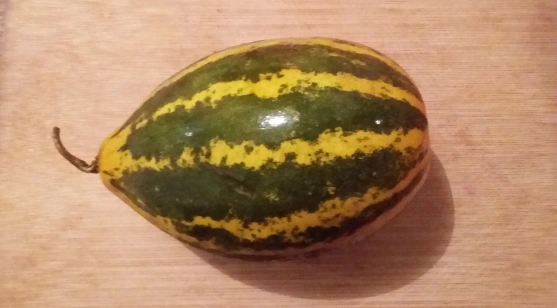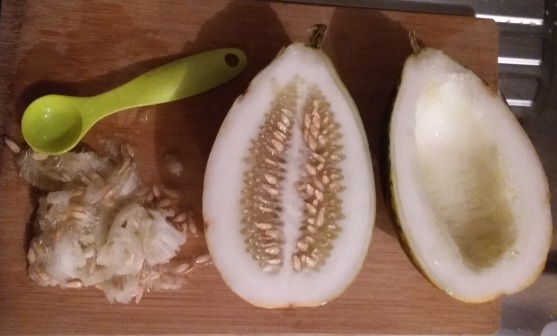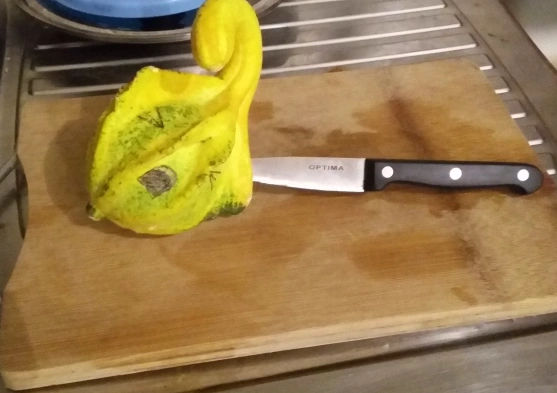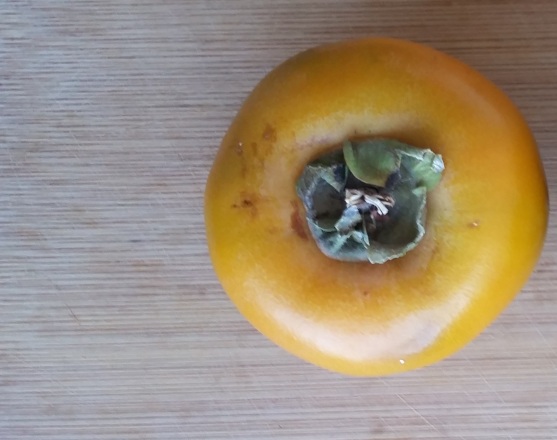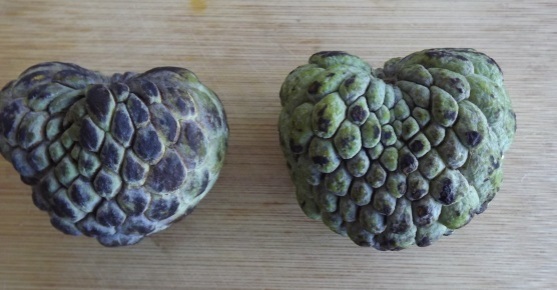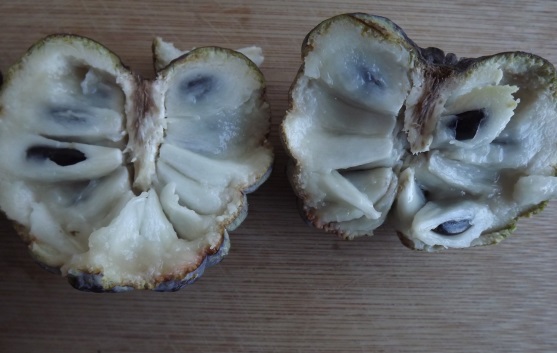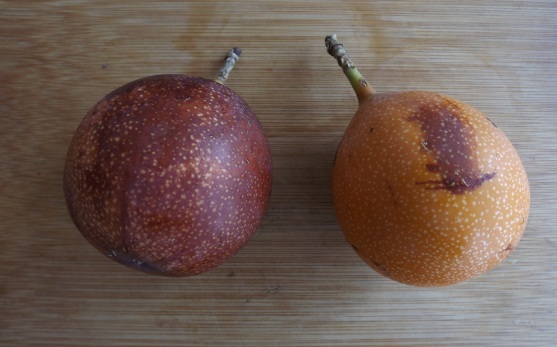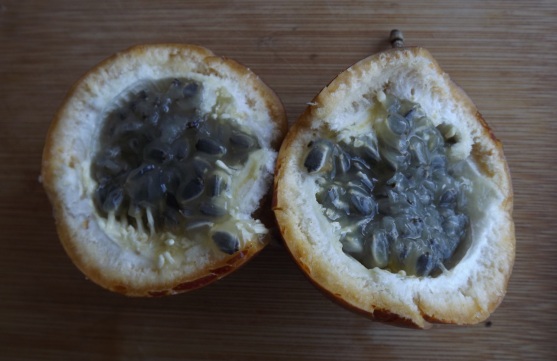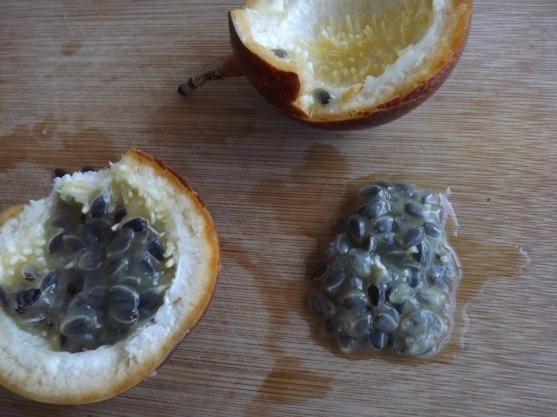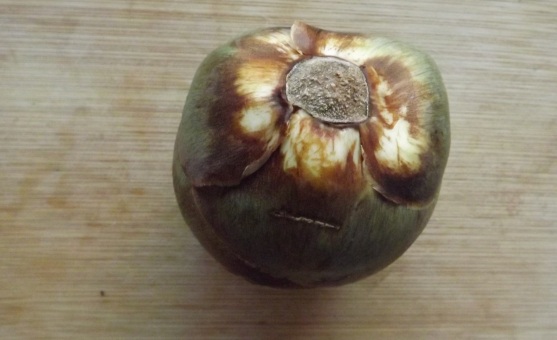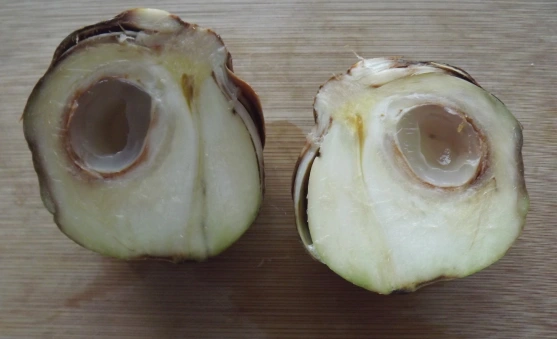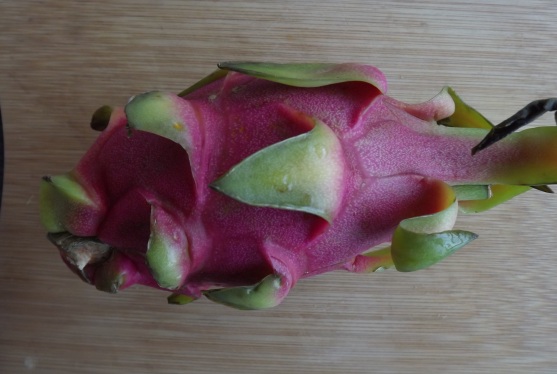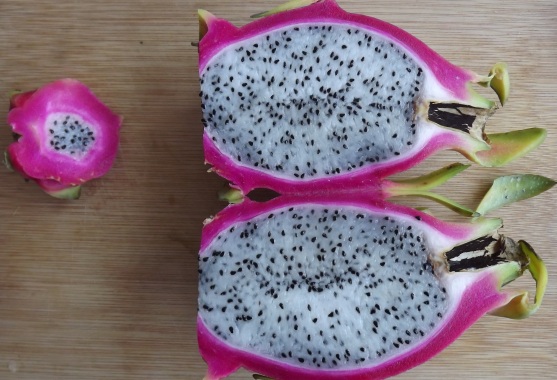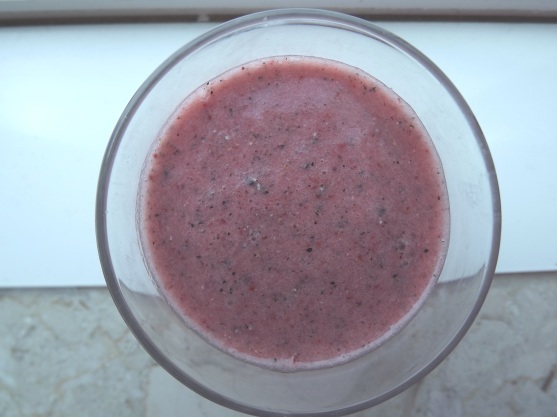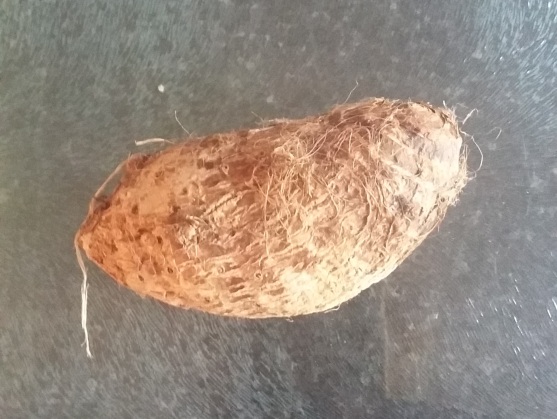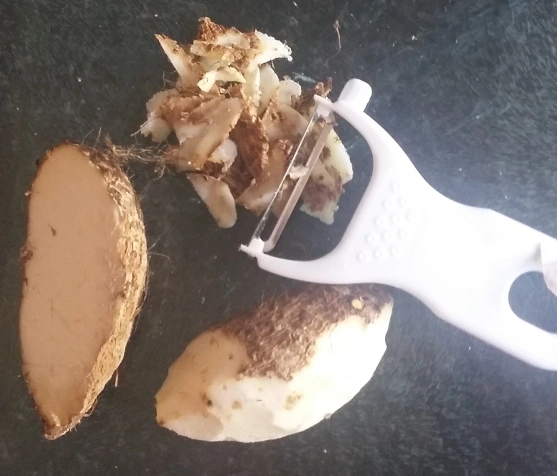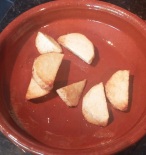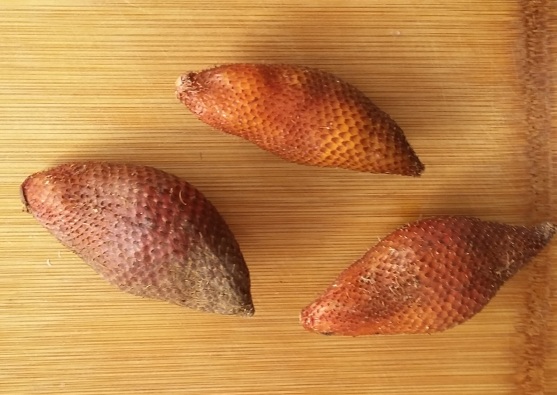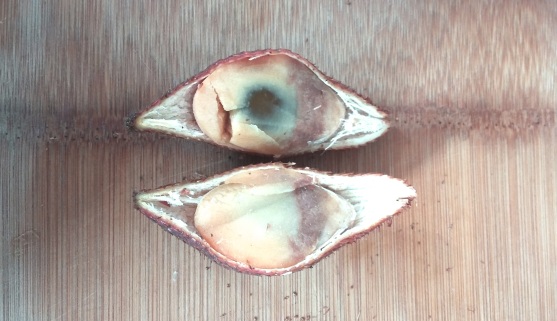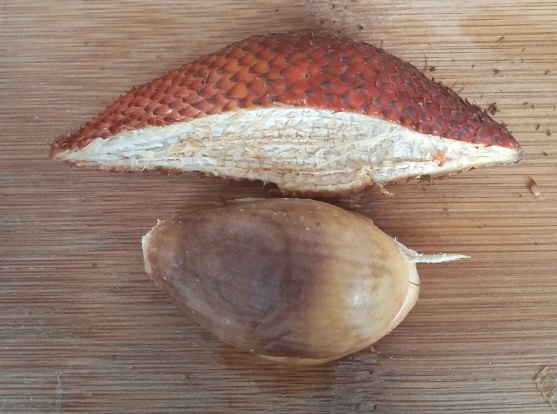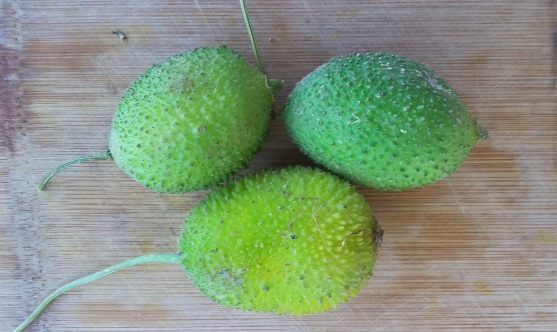
Name: Kokarol, also known as spiny gourd or kantola.
Appearance: The spiny gourd is an unlikely candidate for a WVW blogpost. For one thing, I had made a promise to myself, following the custard apple incident, to avoid fruit and vegetables with spines, spikes and scales – at least temporarily. For another, I had also had a rather emotional encounter with a different member of the gourd family during the making of a previous blogpost.
However, those of you who are au fait with Abu Dhabi’s selection of fresh produce will know that there are a great many gourds left for me to investigate. The spiny gourd seemed like a good place to start. At about the size of a large apricot or small plum, there is nothing particularly threatening about the gourd’s lime-green skin, tiny spikes and long stalk. In fact, as weird vegetables go, I would almost describe this one as cute.
When I cut the gourds open, I discover an almost creamy, avocado-like flesh, flecked with small seeds, and smelling vaguely like spring beans.
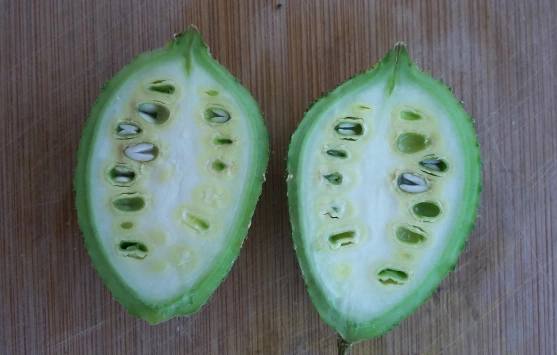
Where do they eat it? According to the label, my specimens came from Bangladesh, and indeed the gourds seem to feature heavily in Hindi cooking.
Cost and sourcing: My kokarol – kokarols? – came from Lulu, at a cost of around 12-13 AED per kilo.
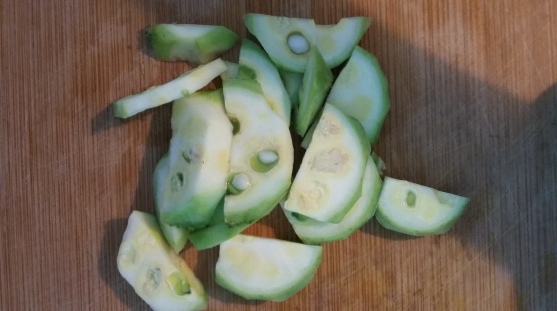
This isn’t the kind of thing you’d eat raw, so I fried up my slices of gourd with a chopped fresh tomato, and half a teaspoon each of cumin, turmeric, and garam masala. There was no rhyme or reason to my spice selection; these were just the ones that I had readily available. Experiment with different combinations, if you like.
So, what did it taste like? My quick tomato and gourd concoction certainly wasn’t fancy but actually tasted rather delicious! The gourd tasted fresh, sweet and green, like peas or green beans, and had a soft texture which worked really well with the rest of the (hastily thrown together) ingredients.
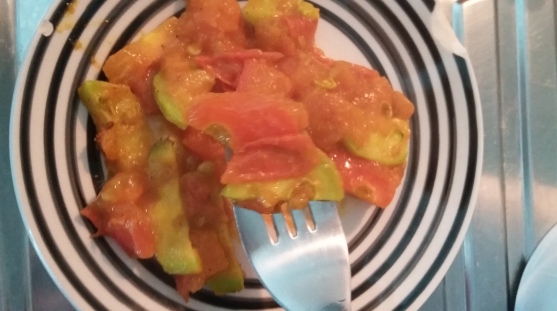
Verdict: 4/5 I would definitely buy this again as an ingredient for a veggie curry. Just goes to show, you shouldn’t judge a book by its cover: or a weird vegetable by its, err… mottled skin?

